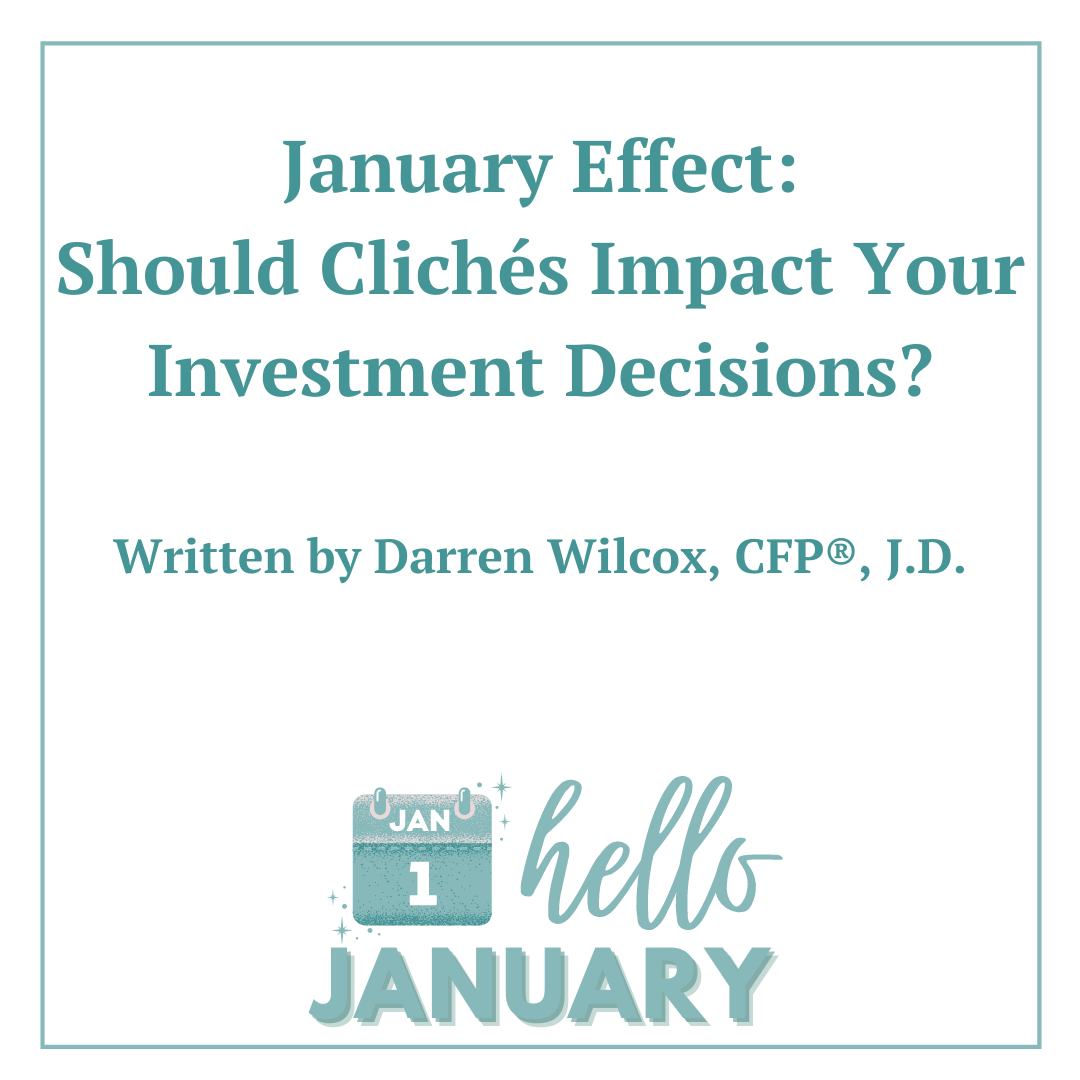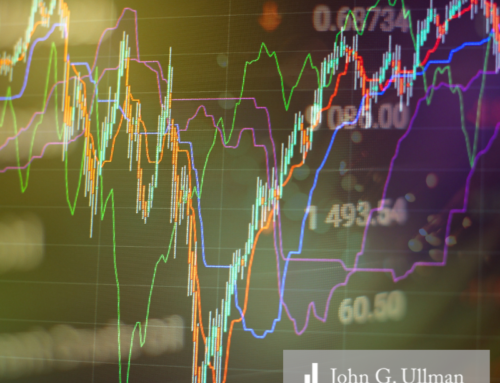Written by Darren Wilcox, CFP®, J.D.
Most everyone is relieved to have 2020 finally in the rearview mirror. As the calendar rolls over to a new year it brings up discussion of a stock market phenomenon known as the January Effect. For those unaware, the January Effect is essentially the belief that no matter what is happening in the world, stock markets tend to rise in January. This is sometimes attributed to New Year’s resolutions, excess cash from year-end employment bonuses, or even positive vibes from investors who feel a new year brings a new start for their portfolios. Another theoretical explanation for the January Effect we have witnessed historically is that investors sometimes engage in tax loss harvesting by selling their losing equities in December. These investors than wait thirty days (necessary time to realize the losses under tax loss harvesting) and then re-enter the position in January, driving up January stock market prices.
Similar to the old sayings such as “April showers bring May flowers” the January Effect is a catchy motto but not material enough to rely upon when making substantive investment decisions.
The U.S. markets finished 2020 on a high note, a strong December continuing a bullish rally that persisted despite worsening economic news and an uptick in COVID-19 cases nationwide. However, January 2020 was actually a flat to negative month – the S&P 500 and Russell 3000 Indices were basically breakeven, the Dow Jones was down 0.89% and the index of smaller stocks (Russell 2000) was down 3.21%. Utility stocks were the best bet that month with the S&P 500 Utilities Index up 6.65% while benefiting from risk-off investor sentiment.
You could argue that January was the beginning of the Pandemic slide, that it’s the exception that proves the rule. With stocks down sharply in late February and most of March that would be a reasonable explanation for the deviation. If you go back one year to 2019 you would find additional evidence to support that theory. January 2019 saw a strong start to the year and while February 2019 continued the rally the returns were subdued compared with January. Going back another year to 2018 we saw positive returns in January and then February 2018 was only slightly positive and even negative in some indices. Using the small sample size of the last three years there appears to be a slight difference in January compared at least with February returns.
So what does this mean for your investment decisions? Don’t get caught up in clichés and mottos when it comes to investing. Often, slow and steady wins the race (which I understand is another clichéd motto but go with me for a bit). Investing is best done with a long-term focus, looking ahead to the future and not worrying too much about the daily stock ticker with its fluctuations. If you have extra money to invest in January, go for it! If it’s actually May, there’s no need to hold onto it thinking that “sell in May and go away” means you shouldn’t invest, go ahead and invest it. It’s much more important to the health of your portfolio to watch your portfolio allocation – the type of investments you have and how much risk you are taking on – than it is which month you are adding investments. Monitoring your risk levels should be a regular review, it can make a big difference, especially if the markets turn negative.
Timing the market is very difficult. When you have cash to invest, you don’t need to wait to try and time the market to figure out exactly when is the best time to invest. That type of approach often will end up with you missing out on a rally. If you are uncomfortable jumping into the market all at once, make a plan and invest your cash in regular intervals over a series of weeks or even months. This approach of regular investing over time (commonly called Dollar Cost Averaging) may see you buy in too early but if the market does go down then your next investment will be at that lower level so you will take advantage of the drop. If the market goes up before your next investment point then at least you invested some cash in at the lower level which will be a benefit as you focus on the long term.
The bottom line is that while it’s possible that January 2021 will be a big month for investment returns it won’t be because of an investment motto. If you have excess cash and want to add to your investments, go for it – January is as good a time as any. But if you get to February or March, don’t think that you have to hold your cash because the famous January Effect has ended. Keep going throughout the year but remember to track your risk – how much of your investments are in stocks with heavy downside potential. It is important to mix in some safer assets as you invest and look for strong risk adjusted returns. Safe investments might not be as exciting, but in a market downturn you will be grateful you have them as part of your portfolio. One way to measure past risk-adjusted returns is to calculate the ratio of portfolio returns over volatility. The Sharpe ratio is an investment measurement which captures this as it equals the portfolio return minus the risk-free rate divided by the portfolio standard deviation (i.e. volatility).
If you are interested in a review of your investments, especially looking at the risks to your portfolio, you can reach out to an advisor at John G. Ullman & Associates, Inc., at any point – more information is available at www.jgua.com. We are here to help you.







